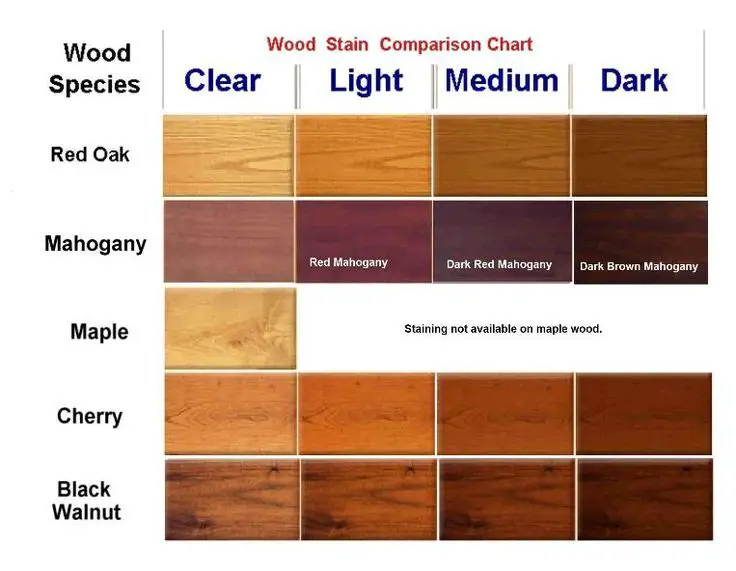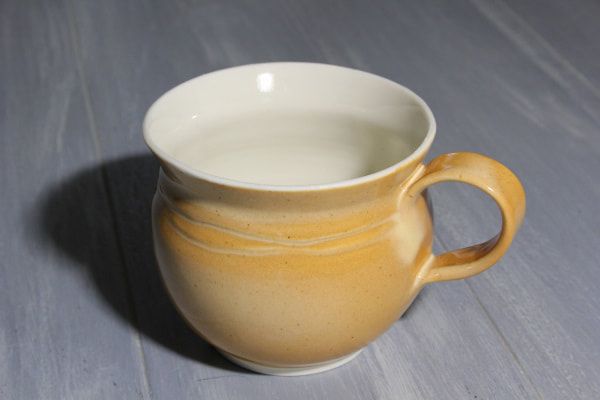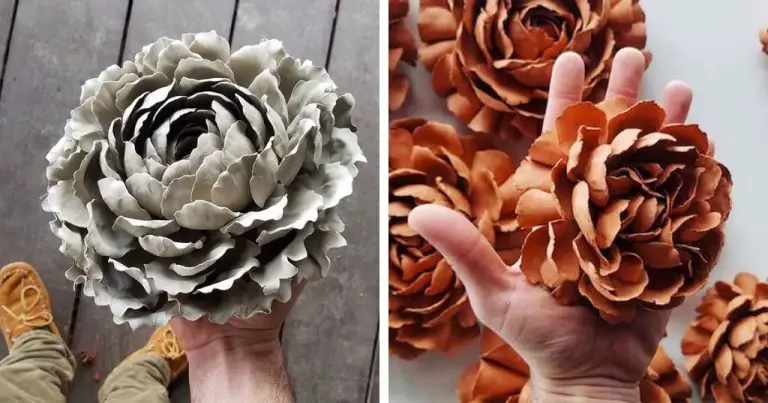Does Minwax Make A Red Stain?
Minwax is a wood finishing and wood care company that has been around since 1904. It was founded by Arthur B. Harrison, who convinced his employer at the time, Clifford I. Miller, to manufacture a new line of waterproofing materials (cite: https://www.minwax.com/en/about-us). Since then, Minwax has grown into one of the most recognized brands for stains, finishes, waxes, and wood care products.
Minwax offers a wide variety of stains in different colors and finishes. Their stains come in oil-based, water-based, gel, and spray options. Some of their most popular stain lines include Wood FinishTM, PolyShades®, Gel Stain, and Express ColorTM (cite: https://en.wikipedia.org/wiki/Minwax). Minwax stains are available at major home improvement stores and can be used to stain or re-stain interior wood surfaces like furniture, cabinets, floors, and more.
Types of Minwax Stains
Minwax offers three main types of wood stains: oil-based, water-based, and gel stains. Each has its own advantages and best uses.
Oil-based stains are the most common type of wood stain. They penetrate deep into the wood grain for a rich, natural color. Oil-based stains enhance the natural look of the wood and show off the grain patterns. They provide good durability and protection against UV rays. However, oil-based stains have strong fumes and require mineral spirits for cleanup. See reference.
Water-based stains are easier to apply and clean up since they are water soluble. They are better for the environment and have less odor than oil-based options. However, water-based stains don’t penetrate as deeply into the wood and may require more frequent reapplication. They also tend to raise the wood grain more. Water-based stains are best for interior surfaces that won’t be exposed to heavy wear. See reference.
Minwax Color Options
Minwax offers a wide range of wood stain colors and options to fit various projects and wood types. Their color palette includes traditional wood tones like cherry, mahogany, and walnut, as well as some more unique shades like white wash, weathered oak, and driftwood.
According to their stain color chart, Minwax produces over 40 wood stain colors. Popular options include classic wood hues like Provincial, Golden Oak, and Special Walnut. They also offer several shades for whitewashing or graying wood like White Wash, Bleached Wood, and Weathered Gray.
There are Minwax stains suitable for both interior and exterior projects. They have oil-based stains that provide rich, deep color penetration, as well as water-based options for low odor and easy soap-and-water cleanup.
Minwax Red Stain Options

Minwax offers several different shades of red wood stain to choose from. Some of their most popular red stain options include:
Red Chestnut – This is a rich, reddish brown shade. It has warm, red undertones while still providing a classic wood look.
Red Oak – As the name implies, this stain gives wood a reddish oak color. It is more of a natural, true red shade compared to Red Chestnut.
Burgundy – For a deep, rich red stain, Burgundy is an ideal choice. It provides a very saturated, dark red color.
Red Mahogany – This stain has orange undertones, resulting in a warm, reddish-orange hue. It is a lighter shade compared to Burgundy.
Bombay Mahogany – For a more exotic look, Bombay Mahogany has purple and red tones. It creates a rich, vibrant reddish-purple color.
Uses for Red Stain
Red stain is commonly used to give wood a rich, warm color. It is often used on furniture, cabinets, floors, doors, and wood trim. Red stain helps highlight the natural wood grain and gives an elegant, classic look to wood projects.
Here are some of the most popular uses and reasons to choose a red wood stain:
- Staining furniture – Red works well for staining chairs, tables, beds, and other furniture, especially those made of oak or pine.
- Cabinets – A red finish pairs nicely with white or off-white cabinets to warm up a kitchen or bathroom. Red stained cabinets have a timeless, traditional style.
- Wood floors – Red oak floors stained a barn red or similar shade bring warmth and sophistication to any room.
- Doors and trim – Front doors, interior doors, baseboards and trim are ideal for red stain, which adds a pop of color and visual interest.
- Rustic décor – Red stain gives wood projects a rustic, farmhouse, or cabin-like aesthetic when used on items like shelves, benches, signs, and more.
Overall, a red stain is commonly selected when aiming to create a sense of comfort, nostalgia, elegance, or farmhouse charm. The tone of red can vary from a light cherry to deep mahogany depending on the look you wish to achieve.
Applying Red Stain
When applying a Minwax red stain to wood, it’s important to properly prepare the surface first. According to the Minwax website, you should start by lightly sanding the wood to ensure proper stain absorption and adhesion. It’s also recommended to apply Minwax Pre-Stain Wood Conditioner before staining, as this will help the stain color appear more uniform.
To apply the red Minwax stain:
- Use a high-quality natural bristle brush to apply the stain in the direction of the wood grain. Apply liberally and evenly.
- Allow the stain to penetrate the wood for 5-15 minutes.
- Wipe away any excess stain using a clean cloth in the direction of the wood grain.
- Allow the red stain to dry for a minimum of 1 hour before applying any topcoat.
- Once fully dry, you can apply a Minwax water-based or oil-based topcoat for protection.
It’s important to follow the manufacturer’s instructions for dry times, topcoat application, and maintenance. Taking the proper steps will help ensure you achieve an even, beautiful red stained wood finish.
Red Stain Looks
The appearance of a red stained wood can vary greatly depending on the type of wood used. Here are some examples of how red stain looks on different woods:
On oak, a red stain often appears as a rich, warm red or reddish brown. Red oak especially takes red stain nicely. The wood’s natural grain patterns are enhanced by the red tones. For a vivid true red color on oak, multiple coats may be required. See this example of red stained oak.
On pine, red stain gives the wood a more pinkish cast. The soft grain of pine absorbs the stain readily, though the color may appear slightly more muted than on oak. Using a gel stain can help produce a deeper color on pine. Here’s an example of bright red stain on pine.
Maple takes red stain in a lighter, more natural way. The stain tends to look more like a translucent wash over the pale wood. Multiple coats may be needed for full color saturation. This maple sample has a vibrant crimson stain.
On mahogany, red stain takes on a rich, warm, reddish brown tone. The red hue highlights the attractive grain patterns. See this example of red mahogany.
Red cedar naturally takes stain quite darkly. A red stain on cedar will appear very bold and saturated. Multiple coats are often not needed. Here is red stained cedar.
Caring for Red Stained Wood
Red stained wood requires some special care and maintenance to keep the vibrant color protected. According to Artistic Cabinet Finishes, avoid using water or cleaners directly on the wood, as this can cause the red stain to fade or discolor over time. Instead, dust regularly with a soft cloth to remove any dirt or debris.
To protect the finish, apply a thin coat of paste wax or furniture wax every 6-12 months. Rub the wax on using a clean cloth in a circular motion. Let it dry completely, then buff to a shine with a soft cloth. The wax adds a protective barrier against moisture, spills, and scratches. Reapply whenever the surface seems dull or dry.
For more intensive cleaning, use a wood cleaner specifically formulated for red stained wood, such as Howard Restor-A-Finish. Test on an inconspicuous area first and follow the product instructions closely.
Avoid placing red stained wood in direct sunlight, as UV rays will slowly fade the vibrant color over time. Periodically check for any cracks or damage in the finish and address right away. With proper care and maintenance, a red stained wood surface can remain beautiful for years.
Alternatives to Minwax Red Stains
While Minwax offers a wide variety of quality red stains, there are other brands that manufacture red wood stains as well. Some popular alternatives to Minwax red stains include:
Varathane Premium Fast Dry Wood Stain in Red Mahogany provides a rich, deep red color. It dries fast in about 1 hour and is ideal for items like furniture and cabinets [1].
General Finishes Gel Stain in Georgian Cherry produces a reddish brown hue. It applies easily and evenly for consistent coverage on all wood types [2].
Rust-Oleum Varathane Classic Penetrating Wood Stain in Red Mahogany provides a deep red tone. It penetrates wood surfaces well for protection against weather and sun exposure [3].
Behr Premium Semi-Transparent Wood Stain in Cedar Naturaltone enhances wood with a rich cedar red shade. It allows some of the natural wood grain to show through for added beauty and dimension [4].
These are just a few of the quality alternatives to Minwax red stains that are available from major brands. There are many options for achieving a desired red tone on interior and exterior wood surfaces.
Conclusion
In summary, Minwax offers several high-quality red stain options that can be used to achieve beautiful red-toned wood finishes. Their most popular red stains include Classic Red Mahogany, Red Oak, and Red Chestnut. These oil-based penetrating stains complement various wood types like oak, mahogany, walnut, pine, and more. When applied properly, Minwax’s red stains enhance the natural wood grains and textures. The shades of red can range from light pinkish red tones to deep, dark reds.
Minwax red stains are primarily used for interior wood surfaces like cabinets, doors, trim, furniture and more. They bring warmth and rich color to any space. With proper prep work, application techniques and top coat sealing, red stained wood can be preserved for many years while maintaining its vibrancy. While Minwax may not offer the most extensive red color selection, their high-performing wood stains in various red shades remain popular choices for DIYers and professionals.



